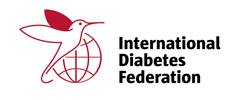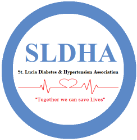What is hypertension (high blood pressure)?
.jpg) High blood pressure is a common condition in which the long-term force of the blood against your artery walls is high enough that it may eventually cause health problems, such as heart disease.
High blood pressure is a common condition in which the long-term force of the blood against your artery walls is high enough that it may eventually cause health problems, such as heart disease.
Blood pressure is determined both by the amount of blood your heart pumps and the amount of resistance to blood flow in your arteries. The more blood your heart pumps and the narrower your arteries, the higher your blood pressure.
You can have high blood pressure (hypertension) for years without any symptoms. Even without symptoms, damage to blood vessels and your heart continues and can be detected. Uncontrolled high blood pressure increases your risk of serious health problems, including heart attack and stroke.
High blood pressure generally develops over many years, and it affects nearly everyone eventually. Fortunately, high blood pressure can be easily detected. And once you know you have high blood pressure, you can work with your doctor to control it.
The blood flowing inside vessels exerts a force against the walls - this is blood pressure.
Hypertension is defined as having a blood pressure higher than 140 over 90 mmHg, with a consensus across medical guidelines.
.jpg) This means the systolic reading (the pressure as the heart pumps blood around the body) is over 140 mmHg (millimeters of mercury) and/or the diastolic reading (as the heart relaxes and refills with blood) is over 90 mmHg.
This means the systolic reading (the pressure as the heart pumps blood around the body) is over 140 mmHg (millimeters of mercury) and/or the diastolic reading (as the heart relaxes and refills with blood) is over 90 mmHg.
This threshold has been set to define hypertension for clinical convenience as patients experience benefits once they bring their blood pressure below this level.6
However, medical experts consider high blood pressure as having a continuous relationship to cardiovascular health.1,6 They believe that, to a point, the lower the blood pressure the better (down to levels of 115-110 mmHg systolic, and 75-70 mmHg diastolic).
This view has led the American Heart Association (AHA), for example, to define the following ranges of blood pressure (in mmHg):
- Normal blood pressure is below 120 systolic and below 80 diastolic
- Pre-hypertension is 120-139 systolic or 80-89 diastolic
- Stage 1 high blood pressure (hypertension) is 140-159 systolic or 90-99 diastolic
- Stage 2 high blood pressure (hypertension) is 160 or higher systolic or 100 or higher diastolic
- Hypertensive crisis (a medical emergency) is when blood pressure is above 180 systolic or above 110 diastolic.




